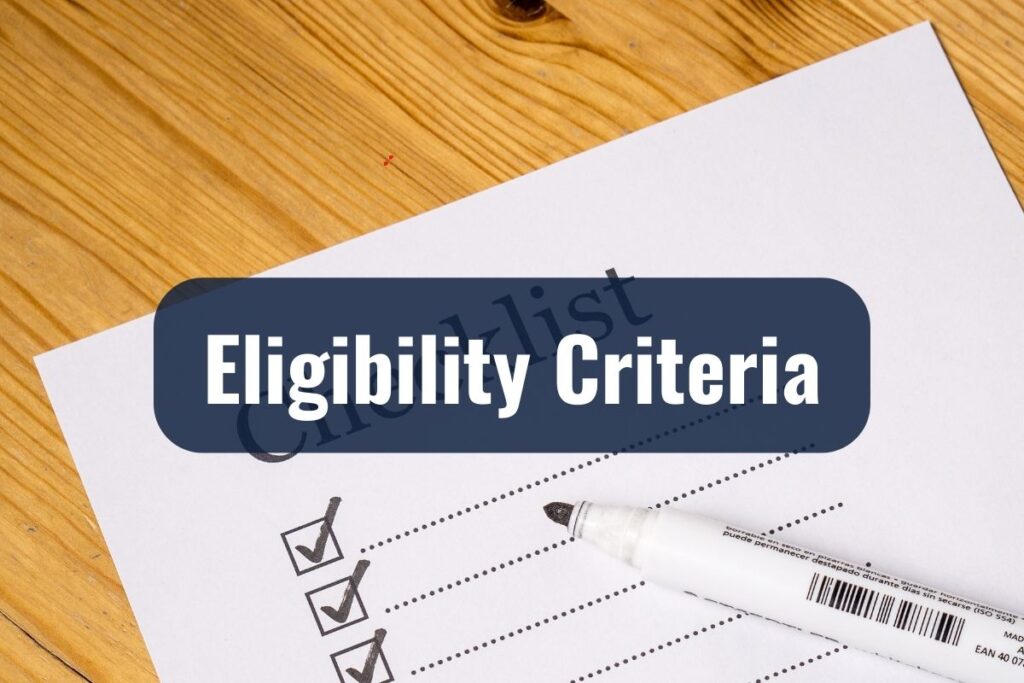One of the great things about living in Norway is the support the government offers to families. Among these are child benefits, designed to make your life a little bit easier when raising children in Norway.
Raising a family in a foreign country comes with a unique set of challenges. Understanding the basics of child benefits in Norway is one key way to ease those challenges.
Key Takeaways
- Understanding eligibility criteria is the first step to accessing child benefits.
- The application process is streamlined, mostly online, and can be done through NAV.
- Be mindful of tax implications when receiving child benefits.
- Special cases like multiple births, single parenthood, and special needs are considered.
- Annual renewals and updates are crucial to maintaining your benefits.
- Common pitfalls include missed deadlines and incomplete documentation.
Eligibility Criteria

Understanding Who Qualifies
Before you can benefit from any of Norway’s child support services, you’ll need to know if you’re eligible. Let’s face it: there’s nothing more frustrating than filling out a mountain of paperwork only to discover that you’re not even eligible to apply. So, here’s a straightforward look at what the Norwegian government generally requires for child benefit applicants.
Residency Status: Where You and Your Child Live Matters
Firstly, at least one parent and the child must be residents of Norway. If you’ve moved here for work or other reasons and have established residency, you should meet this criterion. Note that residency doesn’t always mean citizenship; so even if you’re not a Norwegian citizen, you can still be eligible for child benefits based on your residency status.
Age Limit: It’s Not Just for Babies
You might be surprised to learn that child benefits in Norway usually extend until the child turns 18. Yes, you read that correctly—up to 18 years of age. That means even if your kids are already in school, you could still qualify for certain child benefits.
Related: Parental Leave in Norway Explained
Income: No Need to Worry Here
In Norway, child benefits are generally not means-tested, meaning they aren’t dependent on your income level. This is unlike some countries where your earnings might disqualify you from receiving child support. So, whether you’re just starting out in your career or you’re well-established, child benefits are designed to be accessible.
Some Exceptions
Of course, as with any rule, there are exceptions. Special cases, such as families with adopted children or children with special needs, may have slightly different criteria. We’ll cover that in a later section dedicated to special circumstances.
Types of Child Benefits
| Type of Benefit | Description | Eligibility Notes |
| Standard Child Benefit | Monthly payment for children under 18 | Resident in Norway, children living with you |
| Extended Benefit for Single Parents | Extra grants for single parents | Proof of single parenting required |
| Multiple Births | Additional payments for twins, triplets, etc. | Standard benefit must be already approved |
| Special Needs | Extra support for children requiring specialized care | Documentation and assessments required |
| Short-Term Benefit | Pro-rated benefits for temporary residents | Varies, additional documentation needed |
The Different Ways Norway Supports Your Family
Now, what can you actually expect to receive? Don’t worry, it’s not just a pat on the back and “good luck” from the government. Norway genuinely aims to help families, and there are different types of child benefits to prove it.
Cash Benefits: Because Diapers Aren’t Free
First up on the list is Cash Benefits (“Kontantstøtte” in Norwegian). These are for families with children under the age of 2 who don’t attend a kindergarten that receives public funding. It’s like the government saying, “Hey, we get it. If you want to take care of your little ones at home for a bit, here’s some support.”
Kindergarten Support: Making Early Education Affordable
If you decide that kindergarten is the best option for your child (and let’s face it, they do offer some adorable arts and crafts), you might be eligible for Kindergarten Support.
This financial aid helps to defray the costs of sending your little Picasso or Einstein to a registered kindergarten. You get financial peace of mind, and your child gets to explore, play, and learn in a structured environment. Win-win!
Single Parent Benefits: Extra Help When You’re Doing It Alone
Raising a child as a single parent? Kudos to you for being the superhero that you are! Norway recognizes that one pair of hands can’t be in two places at once. That’s why there are special allowances for single parents. These include extended child benefits and additional grants, providing a financial cushion that can help make life more manageable.
Special Notes for Unique Situations
We’ll delve into special circumstances later, but it’s worth noting here that if your family has unique needs—like twins, triplets, or children with special requirements—Norway has got you covered. Rest assured, there’s a good chance that the system is more flexible than you think.
How to Apply

Taking the Next Step: Getting Your Benefits
So, you’re eligible and you know what types of benefits suit your family. The next step, naturally, is to apply for these benefits. It might sound daunting, but don’t worry—the Norwegian system is more user-friendly than assembling a piece of flat-pack furniture.
Finding the Application Form
Your first port of call is the NAV (Norwegian Labour and Welfare Administration) website. It’s a treasure trove of forms, guidelines, and frequently asked questions.
Here, you can find the specific application forms for each type of child benefit. Many of the forms are available in English, a relief if your Norwegian is still a work in progress.
Filling in the Details
Application forms usually ask for general information about you, your child, and perhaps even details about your child’s other parent. Fill this in carefully; remember, this isn’t the place to be sketching doodles or daydreaming about your next family hike through the Norwegian mountains.
Submitting the Documentation
Alongside your application form, you’ll also need to submit some supporting documents. These can include:
- Proof of residency or citizenship (for you and your child)
- Birth certificates
- Any relevant custody agreements, if applicable
A Quick Tip Before You Submit
Before you send it all off, double-check your application and documents. A single missing page or incorrect detail can delay the whole process. It might sound tedious, but a few extra minutes now can save you days—or even weeks—of waiting later.
Once everything looks good, submit your application either online or at a local NAV office. And voilà! You’ve successfully navigated the application process.
Timeline for Approval
When Will the Good News Arrive? The Waiting Game Explained
Okay, so you’ve clicked ‘Submit‘ or handed your application to a friendly face at the NAV office. A virtual—or literal—high five to you! Now comes the part that no one likes: waiting. But hey, you’ve scaled mountains of paperwork, and this waiting period can be a time to catch your breath (or maybe catch up on laundry—your choice).
The Standard Timeline: Good Things Come to Those Who Wait
In a standard scenario, the NAV usually takes around 3-6 weeks to process your application for child benefits. This time allows NAV to thoroughly review your application and the accompanying documents, ensuring that everything aligns with their criteria.
Benefit Disbursement: When the Cha-Ching Happens
Once your application gets the green light, the benefits are typically disbursed at the end of each month. Some families might start seeing the benefits sooner, especially if all the documentation was absolutely spot-on. But generally, expect that first payment to come in within a month or so after approval.
What If There Are Delays?
It’s worth mentioning that sometimes delays happen. Perhaps the NAV office needs additional information from you, or maybe there was a holiday that pushed processing times back a bit.
If you experience delays, don’t panic. The NAV will usually notify you if they need more information or if they expect a longer processing time for some reason.
Tax Implications

When Benefits and Taxes Cross Paths: What You Need to Know
You’ve tackled eligibility, types of benefits, and even survived the application process. But before you spend that well-deserved benefit payment, let’s talk taxes. It’s not the most thrilling topic, especially when there are so many more exciting things to discover in Norway. But understanding the tax implications now can save you from any unpleasant surprises later on.
Related: Understanding Norwegian Taxes
Child Benefits are Generally Tax-Free: A Breath of Fresh Air
First, let’s start with some good news: in Norway, standard child benefits are generally not considered taxable income. Whether it’s Cash Benefits or Kindergarten Support, these amounts typically arrive in your bank account tax-free, allowing you to allocate the full amount toward your family’s needs.
Special Types of Benefits: A Slightly Different Story
However, keep in mind that some special types of benefits may have different tax implications. For instance, certain allowances for single parents or for children with special needs could be subject to taxation.
If you’re receiving these types of benefits, you’ll want to double-check the specifics to make sure you’re in the clear.
Reporting to the Tax Authorities: An Annual Affair
Even though the standard child benefits are usually tax-free, it’s still essential to report them in your annual tax return. Reporting doesn’t mean you’ll be taxed on these benefits, but it does keep the Tax Administration informed, ensuring you won’t face any issues down the line.
When In Doubt, Seek Professional Advice
If you find yourself scratching your head over tax forms, or if your situation is a bit more complex—perhaps due to dual citizenship or international income—it may be worth consulting a tax advisor familiar with both Norwegian and international tax laws.
Special Cases
When Your Family’s Situation Isn’t Textbook: What to Know
Every family is unique, and Norway understands this. Maybe you’re a single parent juggling everything on your own, or perhaps you’ve just welcomed twins (or triplets!) into your family. Maybe your child has special needs that require more specialized care. Whatever your special case, chances are, there’s a provision in the Norwegian child benefits system just for you.
Families with Multiple Births: Double the Joy, Double the Support
First things first, if you’ve had twins, triplets, or even more bundles of joy at once, congratulations are definitely in order! But we get it—more kids at once can mean more financial pressure. That’s why the Norwegian system has special provisions for families experiencing multiple births. These usually involve additional payments on top of the standard child benefits to help manage the extra costs.
Single Parents: Your Superhero Cape Comes with a Bonus
If you’re navigating parenthood on your own, take a moment to give yourself a much-deserved pat on the back. Being a single parent is no small feat, and Norway has a safety net for you.
In addition to the regular child benefits, you might be eligible for extra grants or an extended benefit period. These extra funds can serve as a financial cushion, helping you maintain a balanced family life.
Children with Special Needs: Extra Care, Extra Support
Families with children requiring special care or education can also apply for additional support. This might include a more comprehensive financial package to assist with costs like therapy, medical equipment, or specialized schooling. While the application process may require extra documentation or assessments, know that this support is designed to ease the daily challenges you face.
Temporary Residents: Short-Term Stay, Short-Term Benefits
Are you in Norway for a shorter period, perhaps for a specific work assignment? Depending on your situation, you might still qualify for pro-rated child benefits. The requirements will differ, and you’ll likely need to provide additional documents, but it’s worth exploring.
In Special Cases, Specialized Guidance May Help
For these more unique scenarios, consider seeking professional advice or guidance from social service experts or legal advisors who specialize in Norwegian welfare benefits. They can help you navigate the more complex paths and ensure you’re receiving all the support you’re entitled to.
Renewal and Updates

Keeping the Benefits Rolling: Your Guide to Staying Up to Date
Alright, you’ve navigated the labyrinth of forms, awaited the approval, and finally, the benefits are flowing into your account. But wait—like most things in life, child benefits aren’t a “set it and forget it” affair. Here’s how to keep the benefits coming and what to do if your family situation changes.
Annual Renewals: Yes, It’s a Thing
Most child benefits are subject to annual renewals. You won’t usually have to fill out the entire application form again but you may need to submit updated documents. NAV will often send you a reminder when it’s time to renew, but it’s good to mark it on your calendar just in case.
Change in Family Circumstances: When Life Happens
Had another child? Moved to a new city? Divorced or changed your employment status? Life is full of twists and turns, and when these happen, it’s crucial to inform NAV as soon as possible. Changes in your family or financial situation can affect your eligibility and the amount you receive.
Keeping Your Information Up to Date: Why It Matters
Ensuring that your details are current isn’t just bureaucratic red tape; it’s a safeguard to make sure you’re getting the right amount of support—no more, no less. Outdated information can lead to overpayments that you’ll have to return later, or you could miss out on higher benefits you’re entitled to. Either way, it’s a headache you’d rather avoid.
The How-To of Updates: Your Checklist
If you do need to make updates, here’s a quick rundown of how to do it:
- Log in to your NAV account: Most changes can be made online.
- Find the relevant form: Look for a form or a section on the NAV website that allows for updating personal details or family circumstances.
- Submit the updated documents: These might include new income statements, birth certificates, or housing records.
Small Effort, Big Impact
Yes, renewals and updates might feel like one more thing on an already-packed to-do list. But they’re also an important part of ensuring that your family continues to get the support it deserves.
And who knows? A few minutes spent updating your information today could translate into more free weekends exploring Norway’s beautiful outdoors with your family. Now that’s a trade-off worth making!
Additional Resources
The NAV website is a treasure trove of information on all kinds of benefits, including those for children. It’s updated regularly and is quite user-friendly. You can find forms, detailed guidelines, and even calculators to estimate your benefits.
Sometimes there’s no substitute for talking to a human. Local NAV offices can provide you with in-person consultations to help answer any questions you might have. To find the NAV office nearest you, use their Office Locator tool.


